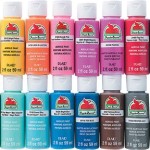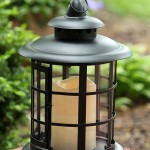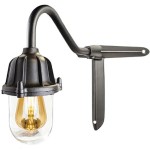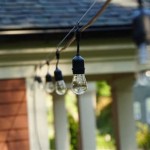Outdoor Lighting DIY: Enhancing Your Outdoor Spaces
Outdoor lighting can transform your backyard from a dimly lit space into an inviting and functional area. It adds ambiance for evening gatherings, provides safety and security, and highlights landscaping features. While professional installation is an option, DIY outdoor lighting projects can be a rewarding experience, enabling you to customize the look and feel of your outdoor space. This article explores the fundamentals of DIY outdoor lighting, providing guidance on choosing the right fixtures, planning the layout, and executing a successful installation.
Choosing the Right Outdoor Lighting Fixtures
The first step in any DIY outdoor lighting project is selecting the appropriate fixtures. Consider the following factors when making your choice:
-
Purpose:
Determine the primary use of the lighting. Is it for accentuating a specific feature, providing general illumination for walkways and patios, or enhancing security around your home? -
Style:
Choose fixtures that complement the existing architecture of your home and the overall aesthetic of your outdoor space. Styles range from traditional lanterns to modern LED strips. -
Material:
Select fixtures made from durable materials that can withstand the elements, such as weather-resistant plastic, metal, or glass. -
Light Output:
Consider the amount of light needed for each area. Lumens measure light output, with higher lumens indicating brighter light. Choose fixtures with appropriate lumen output based on the area's size and purpose. -
Light Color Temperature:
The color temperature of the light, measured in Kelvin (K), influences the ambiance. Warmer colors (2700-3000K) create a cozy atmosphere, while cooler colors (4000-6500K) provide a brighter, more functional illumination. -
Energy Efficiency:
Opt for energy-efficient fixtures with LED bulbs to reduce energy consumption and save on electricity bills.
Planning the Outdoor Lighting Layout
Once you've chosen your fixtures, it's essential to plan the lighting layout. Careful planning ensures optimal illumination and a cohesive aesthetic. Here are some key considerations:
-
Safety and Security:
Prioritize well-lit walkways and pathways to prevent accidents and deter potential intruders. Consider installing motion-activated security lights in strategic locations. -
Functionality:
Ensure adequate lighting for outdoor activities such as dining, entertaining, or reading. Strategically place fixtures near seating areas, tables, or reading nooks. -
Accentuation:
Highlight architectural features, landscaping, and decorative elements with accent lighting. Use spotlights to illuminate trees, statues, or water features, adding depth and dimension to your outdoor space. -
Balance:
Strive for a balanced and harmonious lighting scheme. Avoid excessive brightness, and use a variety of light sources to create visual interest and depth. -
Control:
Consider incorporating smart lighting features for convenience and personalization. Dimmers allow you to adjust the brightness level, while timers can automatically switch lights on and off at specific times.
Installing Outdoor Lighting Fixtures
After planning the layout, it's time to install the fixtures. Here are some general steps to follow:
-
Determine Power Source:
Assess the available power outlets and consider if you need to run additional wiring or install dedicated circuits for your outdoor lighting system. -
Mark Locations:
Use stakes or markers to pinpoint the desired locations for each fixture. Consider placement, height, and visibility. -
Prepare the Ground:
Dig holes for posts or surface-mount fixtures, ensuring they are deep enough and the base is level. Consult local building codes for depth and anchoring requirements. -
Install Wiring:
Run wiring to each fixture, ensuring you use weatherproof wiring and junction boxes. Consult a qualified electrician if you are inexperienced with electrical wiring. -
Mount Fixtures:
Securely fasten the fixtures to their designated locations. Ensure the fixtures are level and stable, and that the wiring is properly connected. -
Test and Adjust:
Once installed, test the lighting system to ensure all fixtures are functioning correctly. Make adjustments to the height, angle, or placement as needed.
DIY outdoor lighting projects can enhance the functionality and aesthetics of your outdoor spaces. By carefully selecting fixtures, planning the layout, and following proper installation procedures, you can create a beautiful and inviting environment for your home. Remember to prioritize safety, consult local building codes, and seek professional assistance when needed.

28 Backyard Lighting Ideas How To Hang Outdoor String Lights
Diy Outdoor Lighting Projects Screen Enclosure

7 Diy Outdoor Lighting Ideas To Illuminate Your Summer Nights Photos Huffpost Life

Diy Outdoor Lighting 8 Cool Lights Bob Vila

41 Diy Outdoor Lighting Ideas

Diy Outdoor Lights Simple And Easy Ideas For Homes Craftionary

Top 28 Ideas Adding Diy Backyard Lighting For Summer Nights Woohome

Creative And Easy Diy Outdoor Lighting Ideas The Navage Patch

Diy Outdoor Lighting Brighten Your Evenings Now S
Homelysmart 10 Diy Outdoor Lighting Ideas That You Will Love
Related Posts







